"Marble is back in favour" say designers at Milan 2014
Milan 2014: the material of the moment at this year's Milan design week was marble, with the streaky stone often associated with classical sculpture and architecture enjoying a revival in contemporary design, says Dezeen style editor Dan Howarth (+ slideshow).
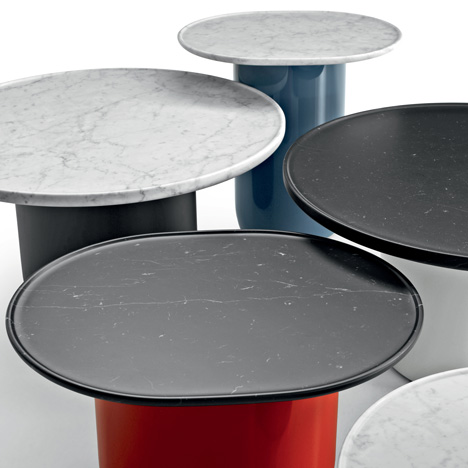
Marble furniture and products were spotted all over Milan earlier this month, noticed not just by Dezeen but designers and curators too.
"Compared to a few years ago when we didn't see much marble at all, it's been very evident over the last couple of years that it's back in favour," British designer Bethan Gray told Dezeen.
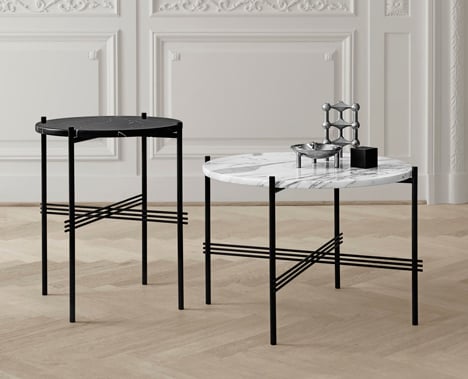
The new-found popularity of marble has to do with the changing values of consumers who are looking to invest in quality materials, according to Gray.
"I think it's to do with the inherent value of the material itself, which has become a very important consideration for the consumer over the last few years," she said. "People are willing to make investments in high-quality natural materials that will last but are increasingly demanding."
"As a material I love the warmth that can be achieved through using marble - particularly in combination with other materials such as solid wood," said Gray. "Marble itself has a timelessness and elegance that I love."
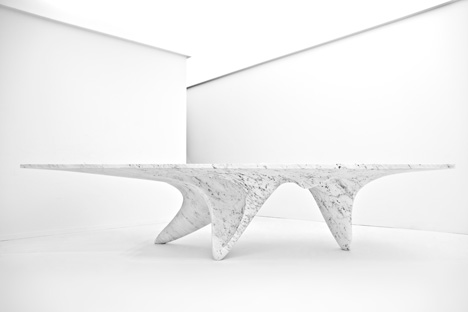
With many marble quarries on its doorstep in Italy, Milan was an ideal location for designers and brands to show their latest pieces in the material.
B&B Italia and Gubi were among the larger design brands presenting new marble designs during the festival, working with designers such as British duo Edward Barber and Jay Osgerby, and Copenhagen-based GamFratesi.
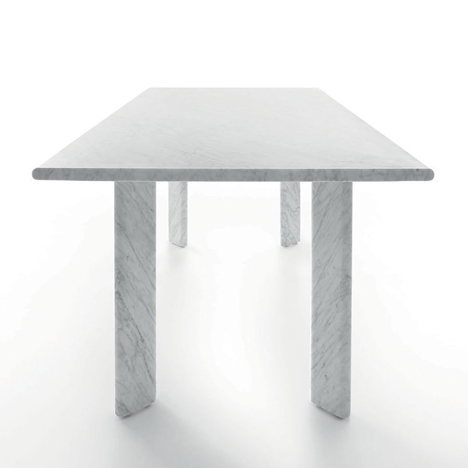
Well known names including Konstantin Grcic, Naoto Fukasawa and Jasper Morrison designed pieces in Carrera marble for the latest range by Italian brand Marsotto Edizioni, which last year paid tribute to late designer James Irvine with an all-black collection.
Architect Zaha Hadid also showed a marble table with sculptural legs for Citco, following her previous designs for the company shown last year.
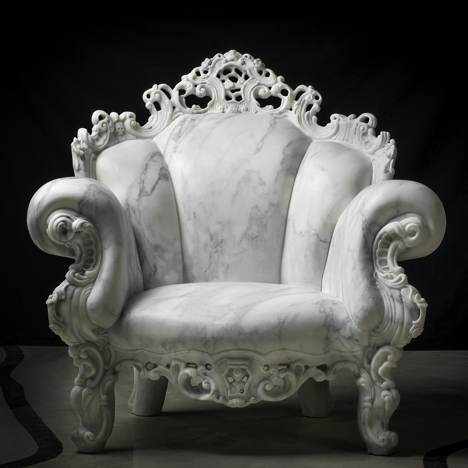
Keen to jump on this resurgence, marble companies curated exhibitions to show off what their material can achieve. Italian marble company Robot City commissioned four projects including a version of Alessandro Mendini's Proust Chair for an exhibition at Ventura Lambrate, while Turkish Stones showed pieces by designers Aziz Sariyer, Fabio Novembre and Tokujin Yoshioka for it's Marble Across Time exhibition.
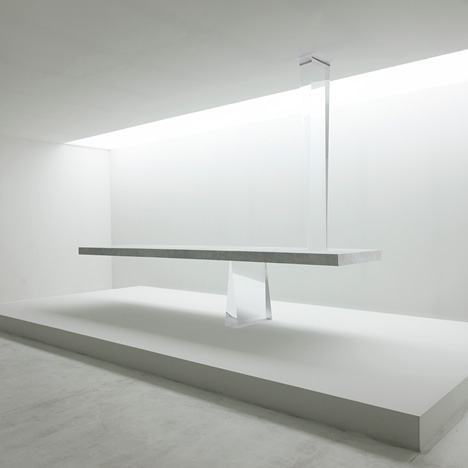
"We are seeing a lot of marble around at the moment," said British designer Lee Broom. "It's being used in more unusual ways than we've seen before."
"It's tactile and you can create limitless shapes and forms, all completely seamless."
Broom believes that advances in how the stone is processed and can be worked have contributed to the increase in its use, along with a shift in attitude towards it as a symbol of status.
"Technology is better so the possibilities of what you can create using marble has increased," he said. "Also I think marble has always been perceived as a luxury material but more recently we have seen a lot more contemporary design. So in that respect I think the emphasis has shifted from marble being a luxury material to simply being a natural material."
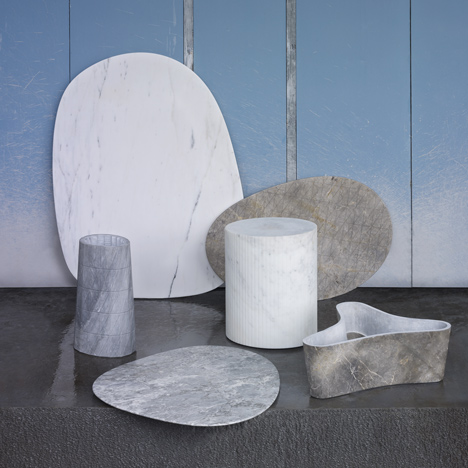
Around Milan design week 2014, the use of marble was most prevalent in table tops.
Barber and Osgerby topped their Button Tables with marble disks, shown on B&B Italia's stand at the Salone Internazionale del Mobile, and GamFratesi also used circular sections of the stone for their TS Tables, displayed at Brera's Palazzo Litta.
Dutch duo Scholten & Baijings created whole tables from marble, carving their signature geometric patterns into the surfaces exhibited at Spazio Rossana Orlandi.
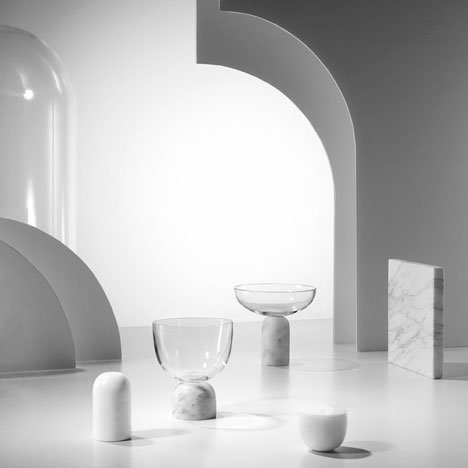
Both Broom and Gray designed marble tableware for a dinner party at Spazio Pontaccio in Brera.
Broom provided a set of drinking vessels with marble bases for the meal, while Gray's contribution was a set of patterned monochrome chopping and cheese boards.
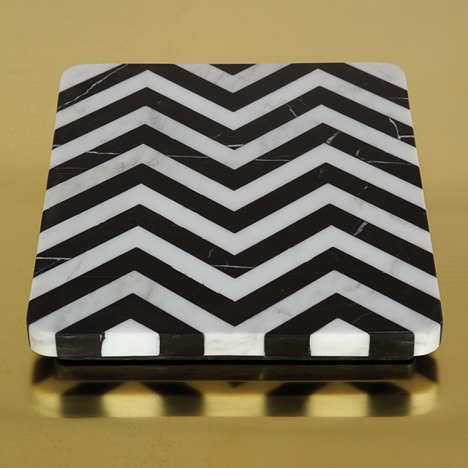
The items created for Robot City's Solid Surfaces exhibition at Ventura Lambrate verged more towards art pieces than furniture, but made a strong statement all the same. The most noticeable was an all-marble version of Alessandro Mendini's Proust Chair.
"Marble and other stones have definitely made their comeback in design this year," said Karina Smrkovsky from Milan's Ventura Lambrate design district.
"The iconic Proust chair of Robot City was almost impossible to overlook. This robust Neo-baroque piece of marble was one of the examples of this stone revival."
Whether this trend will erode from the minds of visitors to Milan remains to be seen. Italy is the marble capital of the world, so perhaps it was inevitable that the industry there would seek to put it back on the design agenda. But for the moment, the material's innate qualities are winning over a fresh batch of designers who are taking it out of the realm of the nouveau riche and putting it back at the forefront of design.